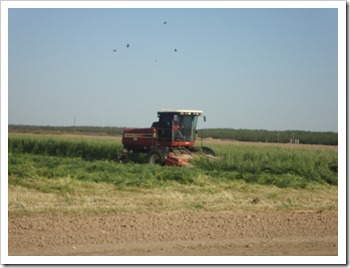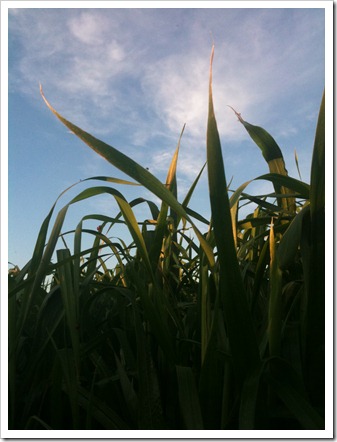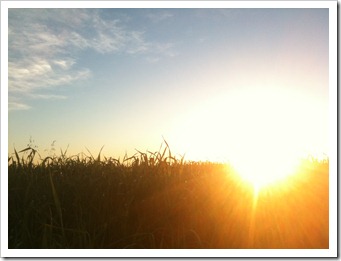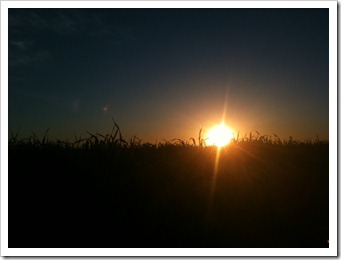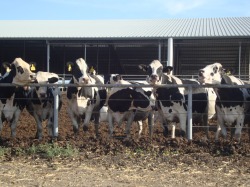Its harvest time here on the dairy. We’ve been busy cutting the oats and rye grass that we grow during the winter months here in California. I guess that’s one of the great advantages of being in California. The growing season is long enough so we can grow 2 or even 3 crops per year instead of just one. Back east many farmers can only grow one crop before the winter snow covers the ground. Here in California, the sunshine state, we can really make the most of the land that we have.
I think that’s one of the many goals dairymen have: to maximize the resources we have. Many people wonder why all cows are not on pasture, and housed in barns. It’s probably for the simple reason that grazing cows requires a lot of land for pasture. If all our cows needed to be grazed, it would take thousands of acres of pasture land to grow enough food for the cows. Cows eat a lot!
The modern way of dairying is probably more environmentally friendly too because we are producing more food with less land. Instead of growing pasture grass, we grow feeds that grow thicker and grow much taller. For example, in the summer we will be growing corn which grows upwards of 6 feet, here in California. The entire cornstalk can be eaten by the cows so you can produce a lot of food with very little land.
I think everyone would graze cows on pasture if they could, but there just isn’t enough land to do it. By maximizing our land to grow as much food as possible, we are conserving land so it can be used to grow other crops for other food we need.
I took some pictures around the dairy where we grow the food for the cows. From the pictures, you should be able to see the process of how we make the food for the cows
** The Field, about to be cut**
From the picture above, you can get a better idea of how much food can be grown. The oats provide much more food than a pasture can provide. Once the oats are grown, they are cut and piled into very neat rows. Also surprisingly there is still a great deal of wildlife around the dairy noting the picture below. Jack the Jack Rabbit seemed to be following us.
**Jack the Jack rabbit was following us**
** The Field after its been cut**
** Cutting the field **
** The machine cuts the oats and puts it into rows**
When the oats are ready to be cut, we use the machine shown in the picture above to cut them. After its been cut and piled into rows, another machine process the oats further cutting it into smaller pieces, and then shoots it into the trucks. Cutting the feed into small pieces really helps make the feed more digestible for the cows. Basically this means that more food is actually digested and used by the cow to make milk, instead of simply passing through the cow’s digestive system unused.
** The chopper then cuts it further into smaller pieces **
** and loads it into the trucks**
** The not-so-bright camera person**
** This tractor packs the pile to eliminate oxygen that could cause spoilage**
The feed is then piled into a large pile and packed tightly by a tractor that pushes the cut feed into the pile. The packing tractor is essential because it eliminates oxygen from the pile. If the oxygen remains in the pile, spoilage will occur. So the oxygen is eliminated, and bacteria are added to start the fermentation process which then preserves the food for years. The silage pile shown below will be all gone by next year though. As I mentioned before, cows eat a lot!
** The truck unloading**
After we finish cutting the oats, we will be planting the corn so stay tuned.
Filed under: Farm, California, Chopping, Conserving land, Crops, Cutting, Growing food, Oats, Summer




